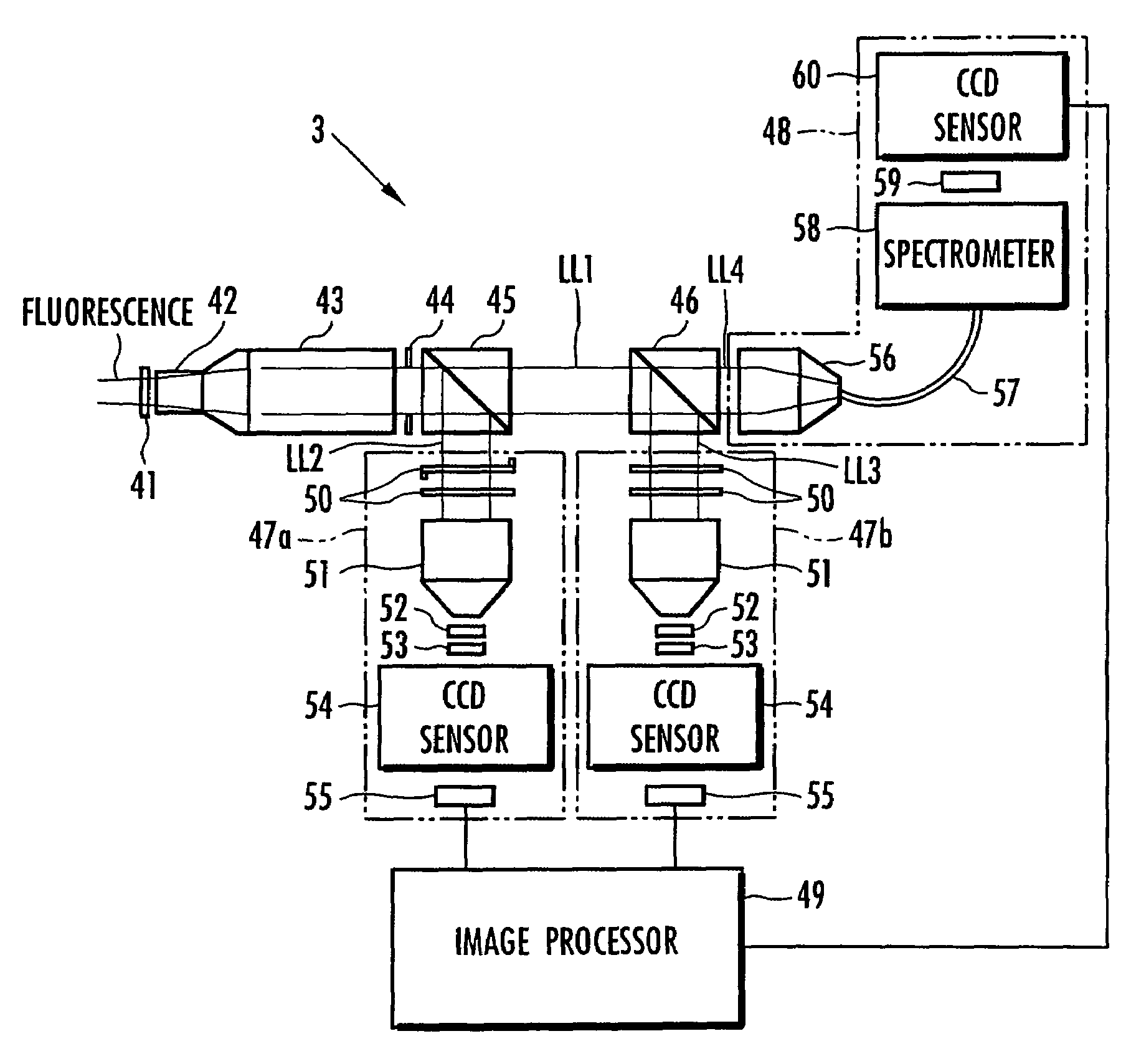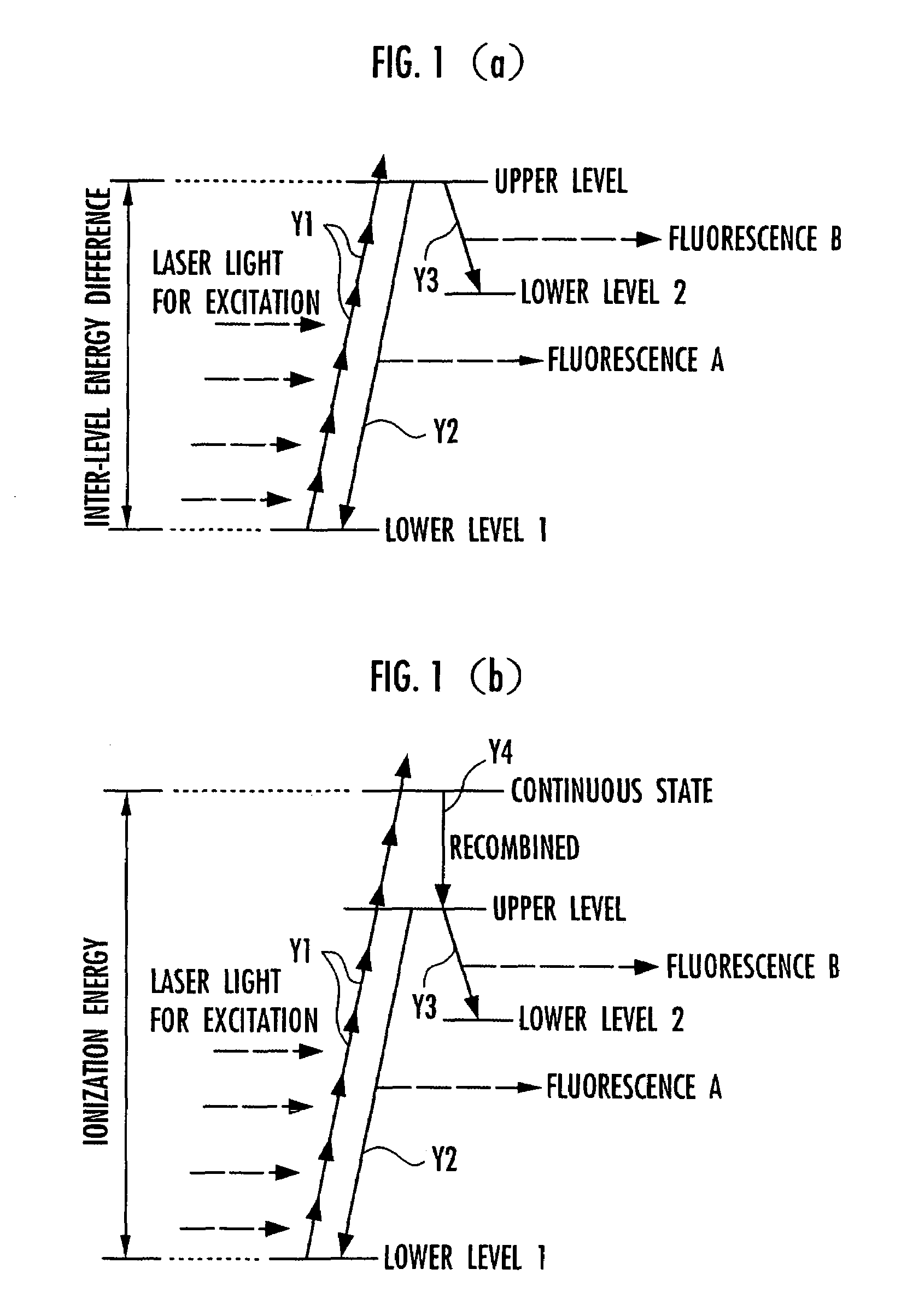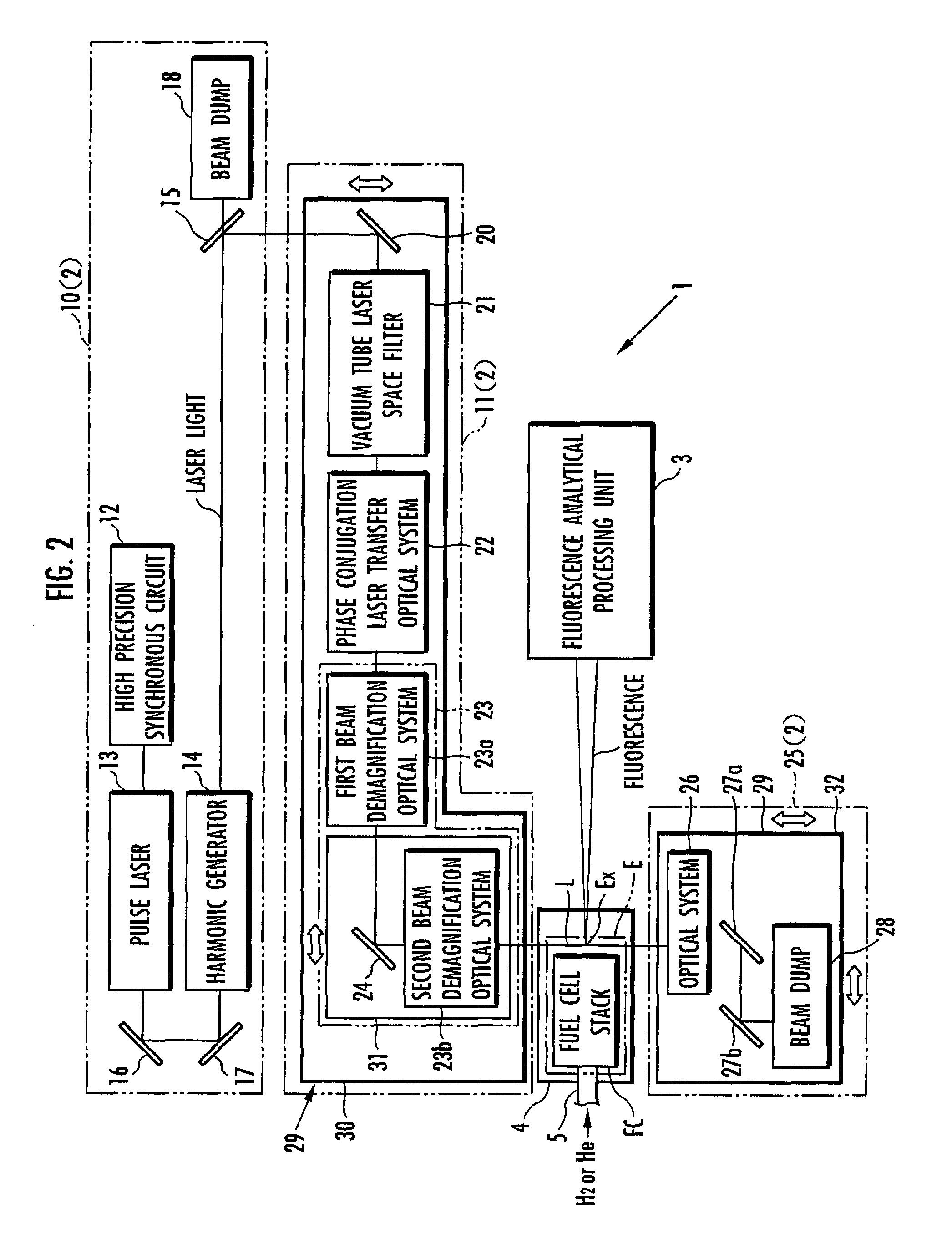Laser analytical instrument, laser analytical method, and gas leak inspection instrument
a technology of laser analysis and gas leak detection, which is applied in the direction of instruments, luminescent dosimeters, optical radiation measurement, etc., can solve the problems of reducing the generating efficiency or other troubles, increasing the cost of the device, and complicated device configuration and other problems, so as to achieve the effect of easy identification
- Summary
- Abstract
- Description
- Claims
- Application Information
AI Technical Summary
Benefits of technology
Problems solved by technology
Method used
Image
Examples
example 1
[0117]A sealed glass tube containing a given type of gas was placed within the target inspection region E of the instrument 1 according to the first embodiment. In this condition, the laser light generating / transfer unit 2 was operated to irradiate the glass tube with the laser light L so that the condensed part Ex is located in the glass tube. During this time, the fluorescence analytical processing unit 3 received fluorescence produced in the glass tube and measured a wavelength distribution of the fluorescence on the basis of the view data obtained from the analyzer 48. The gas sealed in the glass tube includes four types: air, nitrogen, helium, and hydrogen.
[0118]The measurement result is shown in FIG. 5(a) to FIG. 5(d). FIG. 5(a) to FIG. 5(d) each show the wavelength distribution of the fluorescence when the gas sealed in the glass tube is air, nitrogen, helium, or hydrogen (more specifically, the intensity of the fluorescence for each wavelength within the range of 400 to 800 ...
example 2
[0123]Preparing a sealed glass tube containing nitrogen gas that includes hydrogen (hereinafter, referred to as glass tube 1) and a sealed glass tube containing air gas that includes hydrogen (hereinafter, referred to as glass tube 2), the glass tubes 1 and 2 were placed within the target inspection region E of the instrument 1 according to the first embodiment. In this condition, the laser light generating / transfer unit 2 was operated to irradiate the glass tubes 1 and 2 with the laser light L with the condensed part Ex being located in the glass tubes 1 and 2. During this time, the fluorescence analytical processing unit 3 received fluorescence produced in the glass tubes 1 and 2 and measured a wavelength distribution of the fluorescence in the wavelength range of 653 nm to 663 nm on the basis of the view data obtained from the analyzer 48. In this instance, for the glass tube 1, the concentrations of the hydrogen were set to four types: 50 ppm, 100 ppm, 500 ppm, and 1000 ppm. For...
PUM
 Login to View More
Login to View More Abstract
Description
Claims
Application Information
 Login to View More
Login to View More - R&D
- Intellectual Property
- Life Sciences
- Materials
- Tech Scout
- Unparalleled Data Quality
- Higher Quality Content
- 60% Fewer Hallucinations
Browse by: Latest US Patents, China's latest patents, Technical Efficacy Thesaurus, Application Domain, Technology Topic, Popular Technical Reports.
© 2025 PatSnap. All rights reserved.Legal|Privacy policy|Modern Slavery Act Transparency Statement|Sitemap|About US| Contact US: help@patsnap.com



